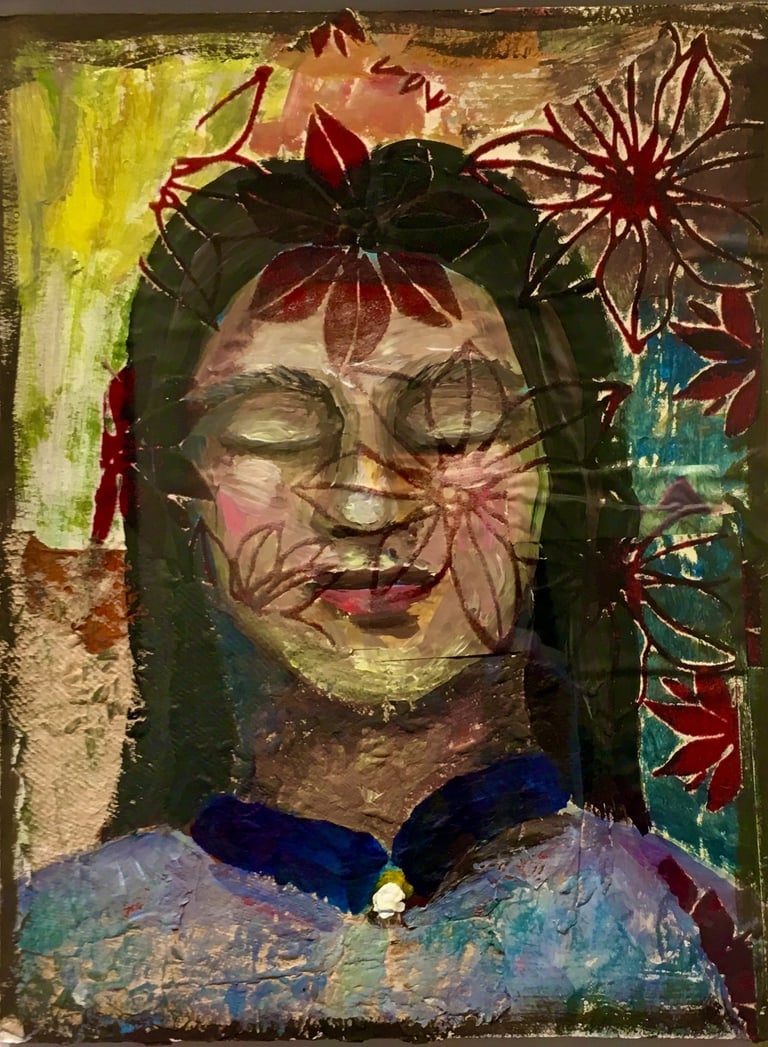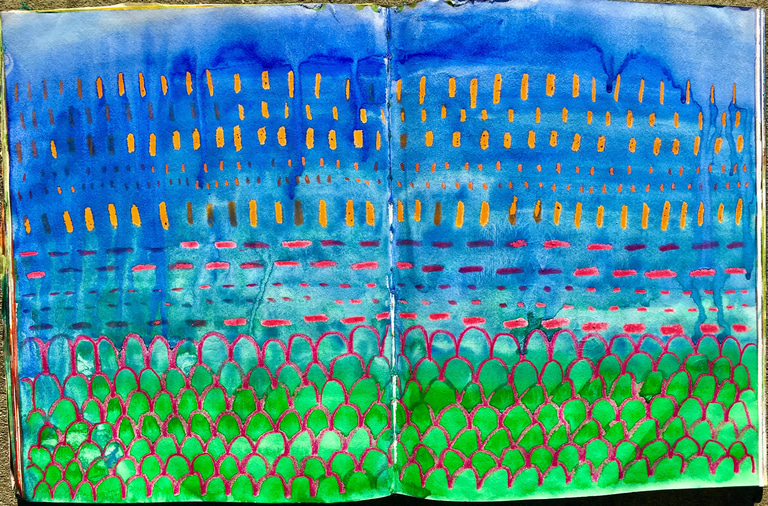Irene Capuchino, MA, LMFT, LPCC, ATR-BC
When "just talking about it" isn't working:
Integrative Art Therapy starts with an Evidence-Based Foundation
Art therapy is an evidence-based therapeutic modality with demonstrated efficacy for specific client populations and symptom presentations. It seamlessly integrates with other established evidence-based therapeutic modalities to create a comprehensive treatment approach that addresses mental health symptoms from multiple dimensions, enhancing the effectiveness of traditional talk-based interventions through creative art-based expression.
Art Therapy and Cognitive Behavioral Therapy (CBT)
When Art Therapy is combined with Cognitive Behavioral Therapy (CBT), art-making helps clients externalize negative thought patterns and visualize cognitive restructuring. This process makes abstract concepts tangible and easier to challenge and transform, providing a concrete pathway for cognitive and behavioral change.
Art Therapy and Acceptance and Commitment Therapy (ACT)
When combined with Art Therapy, Acceptance and Commitment Therapy (ACT) principles are beautifully expressed through artistic metaphors and imagery. This integration allows clients to explore psychological flexibility, identify values, and create visual representations of their commitment to meaningful action despite difficult emotions.
Mindfulness-Based Integration
Mindfulness-Based Stress Reduction (MBSR) techniques naturally complement the present-moment awareness required in art-making. This combination helps clients develop mindful attention to sensory experiences, reduce rumination, and cultivate self-compassion through non-judgmental creative exploration. These techniques are woven throughout treatment to increase sensory-based awareness, reduce reactivity to distressing thoughts and feelings, and develop self-compassion—skills that are essential for both trauma recovery and managing anxiety and depression symptoms.
Narrative Therapy Enhancement
Narrative therapy approaches are enhanced with Art Therapy through visual storytelling, collage work, and symbolic representation. This enables clients to externalize their problems, identify unique outcomes, and recognize their inherent strengths and resilience while authoring new, empowering stories about their identity beyond their symptoms or traumatic experiences.
Dream Work and Unconscious Exploration
Dream work becomes more accessible when clients can draw, paint, or sculpt dream imagery, bypassing the limitations of verbal description to explore unconscious material and symbolic meaning.
Clay Therapy Benefits
The use of clay therapy creates a contained sensory experience that can be deeply grounding for individuals who struggle with sensory or emotional overwhelm. This modality allows clients to externalize internal experiences through molding, shaping, and transforming clay - and by extension - themselves, in ways that feel safe and manageable.
Comprehensive Therapeutic Framework
The integration of Art therapy with Cognitive Behavioral Therapy (CBT), Acceptance and Commitment Therapy (ACT), Mindfulness-Based Stress Reduction (MBSR), and Narrative therapy creates a powerful, multi-dimensional approach to healing that addresses the complex interplay of thoughts, emotions, behaviors, and personal meaning-making that anxiety, depression, and trauma affect. This integrative approach recognizes that healing occurs through multiple pathways—cognitive, emotional, somatic, and spiritual—creating a rich therapeutic experience that addresses the whole person. By combining these evidence-based modalities, clients gain access to a comprehensive toolkit that supports both immediate symptom management and long-term flourishing, recognizing that sustainable healing requires not only symptom reduction but also building psychological resilience, reconnecting with personal values and meaning, and developing a coherent sense of self that incorporates growth and recovery.


"Art can permeate the very deepest part of us, where no words exist."
— Eileen Miller
Ready to get started?
Contact Irene directly with questions, or to schedule a free 15 minute phone consultation:
or phone:
408-643-2283
